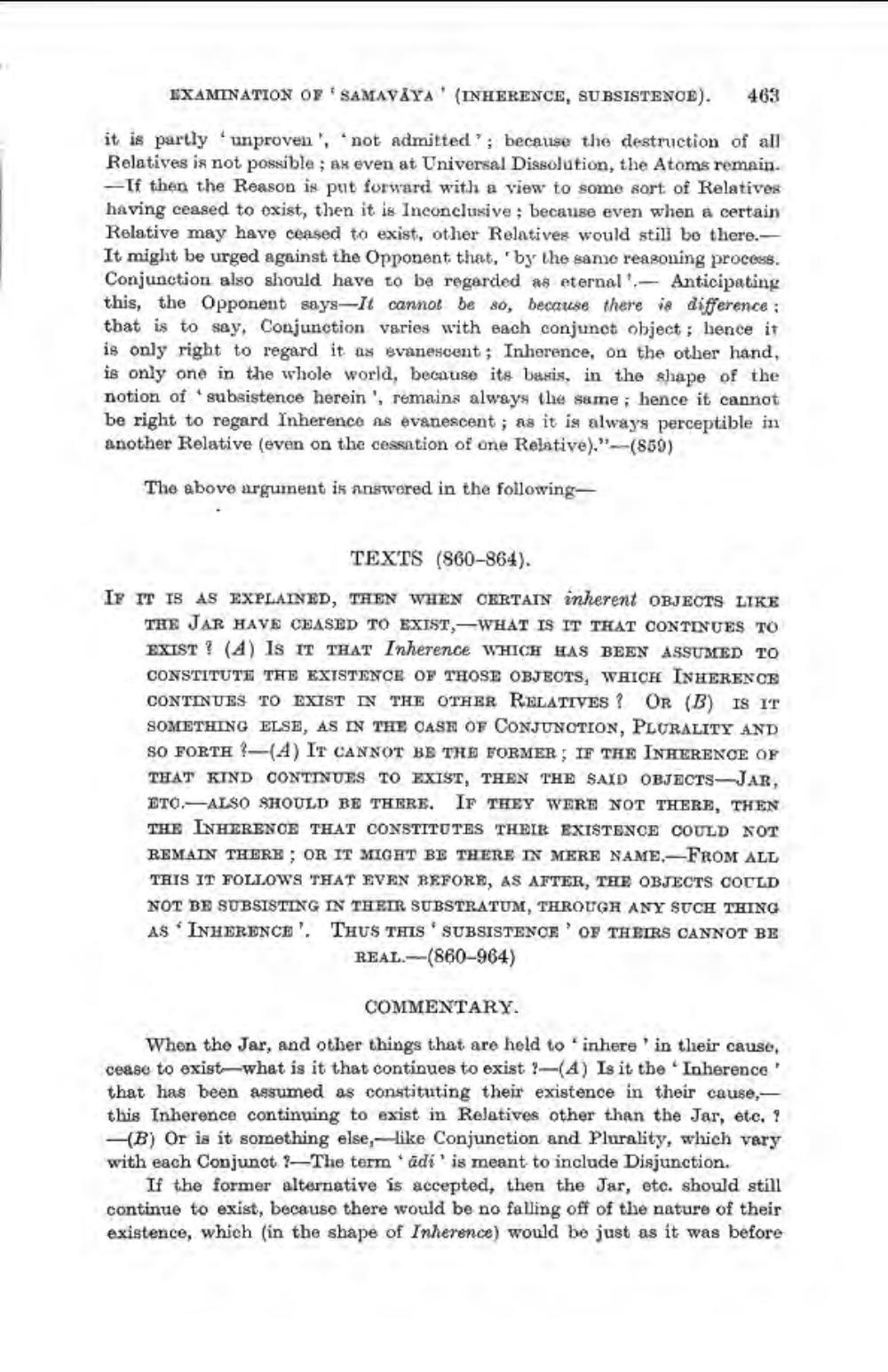________________
EXAMINATION OF SAMAVÄYA (INHERENCE, SUBSISTENCE).
463
it is partly unprovenz", not admitted '; because the destruction of all Relatives is not possible ; ax even at Universal Dissolution, the Atoms remain. -If then the Reason is put forward with a view to some sort of Relatives having ceased to exist, then it is Inconclusive ; because even when a certain Relative may have ceased to exist, other Relatives would still be there.It miglit be urged against the Opponent that, by the same reasoning process. Conjunction also should have to be regarded as eternal',- Anticipating this, the Opponent says-It cannot be 80, because there ve difference ; that is to say, Conjunction varies with each conjunct object; hence it is only right to regard it us evanescent; Inherence, on the other hand, is only one in the whole world, because its basis, in the shape of the notion of subsistence herein, remains always the same; hence it cannot be right to regard Inherence as evanescent; as it is always perceptible in another Relative (even on the cessation of one Relative)."-(859)
The above argument is answered in the following
TEXTS (860-864). IF IT IS AS EXPLAINED, THEN WHEN CERTAIN inherent OBJECTS LIKE
THE JAR HAVE CEASED TO EXIST,-WHAT IS IT THAT CONTINUES TO EXIST? (A) IS IT THAT Inherence WHICH HAS BEEN ASSUMED TO CONSTITUTE THE EXISTENCE OF THOSE OBJECTS, WHICH INUERENCE CONTINUES TO EXIST IN THE OTHER RELATIVES ? OR (B) IS IT SOMETHING ELSE, AS IN THE CASE OF CONJUNCTION, PLURALITY AND SO FORTH-(A) IT CANNOT BE THE FORMER IF THE INHERENCE OF THAT KIND CONTINUES TO EXIST, THEN THE SAID OBJECTS-JAR, BTO. ALSO SHOULD BE THERE. IF THEY WERE NOT THERE, THEN THE INHERENCE THAT CONSTITUTES THEIR EXISTENCE COULD NOT REMAIN THERE ; OR IT MIGHT BE THERE IN MERE NAME,-FROM ALL THIS IT FOLLOWS THAT EVEN BEFORE, AS AFTER, THE OBJECTS COULD NOT BE SUBSISTING IN THEIR SUBSTRATUM, THROUGH ANY SUCH THING AS INHERENCE!. THUS THIS SUBSISTENCE OF THEIRS CANNOT BE
REAL.-(860-964)
COMMENTARY
When the Jar, and other things that are held to inhere'in tlieir cause, cease to exist what is it that continues to exist 1-(A) Is it the Inherence that has been assumed as constituting their existence in their cause, this Inherence continuing to exist in Relatives other than the Jar, etc.? -(B) Or is it something else, - like Conjunction and Plurality, which vary with each Conjunct 1-The term adi' is meant to include Disjunction.
If the former alternative is accepted, then the Jar, etc. should still continue to exist, because there would be no falling off of the nature of their existence, which in the shape of Inherence) would be just as it was before




